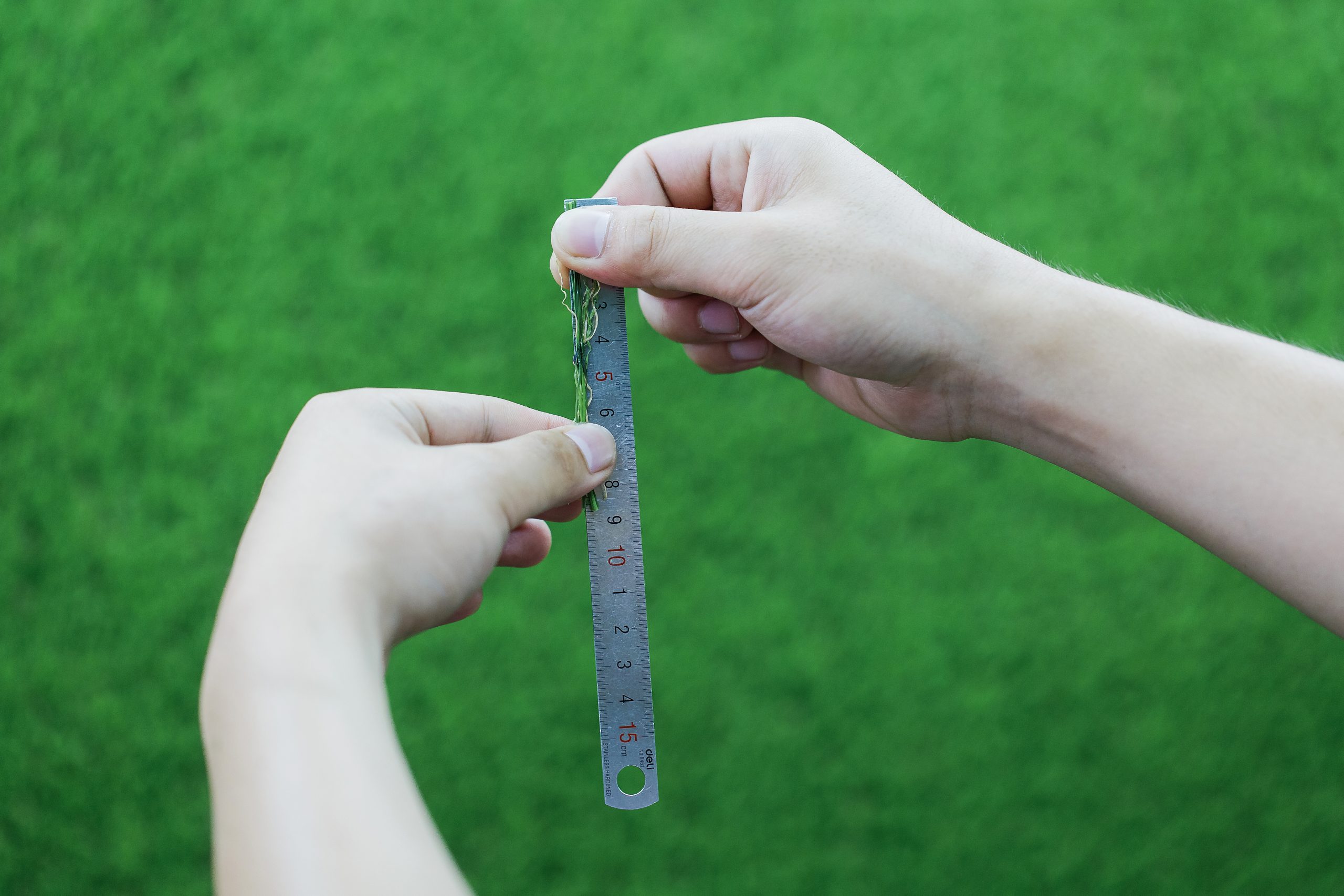What is taken into account when choosing your right artificial turf?
- 01/21/2020

Your budget isn’t the only thing to consider when you decide to cover your garden with artificial turf. Installing fake grass is nothing short of an investment, and if you want your turf to last long, making the right choice is necessary. There are many different techniques and technologies when creating high-quality artificial turf. They can translate into characteristics and features to be taken into account when choosing the best artificial turf.
1. Pile height
The pile height is measured in millimeters. It is the length of the fiber from the backing to the tip of the areificial turf. Pile heights can range from 10mm up to around 80mm. Pile height between 25mm to 45mm are common, and the pile less than 25mm or longer than 45mm tend to be used for sports applications.
2. Density
Evaluation was made from three perspectives: first, the number of needles per meter of grass silk was observed on the back of the lawn. Second, look at the row spacing on the back of the lawn. Third, with the unit length of the grass, the greater the quality of the better. Dtex represents the mass of fiber per 10,000 meters. The heavier the fiber, the stronger the fiber, the stronger the wear resistance, and the longer the service life. However, the larger the weight of grass seedling fiber, the higher the cost. According to the age and use frequency of the athletes, the suitable weight of grass seedling is selected. Therefore, it is recommended to choose the lawn with the weight of over 11000Dtex.
3. Touch feeling, foot feeling, color
We will rest and play on the lawn, sometimes just to enjoy the green it brings., so the feeling of feet and color and quality are the first factors to consider, if it is a sports grass, we should consider the feeling of athletes running on it, the ball feeling — the ball running on the track to meet the requirements of the game.
4. Water permeability
Water permeability is one of the advantages an artificial grass pitch has over natural grass pitch. First and foremost small holes are stuck in the artificial-grass backing to allow the water to drain through to the subsoil. The subsoil, moreover, consists of highly absorbent materials such as crushed rubble, gravel or a mixture of mineral matter. During heavy downpours the base is able to ‘store’ excess water and allow it to seep through slowly to the in-built draining pipes. All of the above enables the artificial turf to be kept in good working order.
5. How to deal with it after its life is over
The modern artificial grass is recycled. Used artificial-grass pitches would be converted into floor-covering material for riding tracks. But new techniques allow us to recycle an artificial-grass pitch and use it for civil-engineering applications. Thanks to the top quality materials both the synthetic grass fibres and the infill can be recycled perfectly. On condition of the correct treatment, artificial grass pitches can also be recycled as artificial turf.



